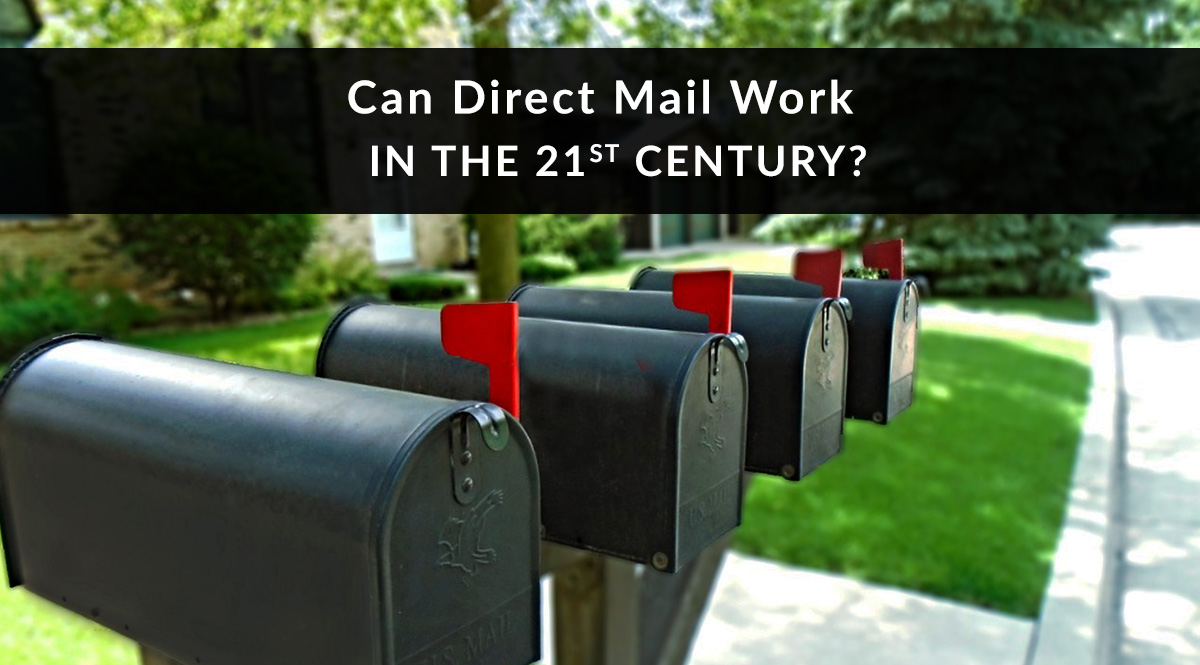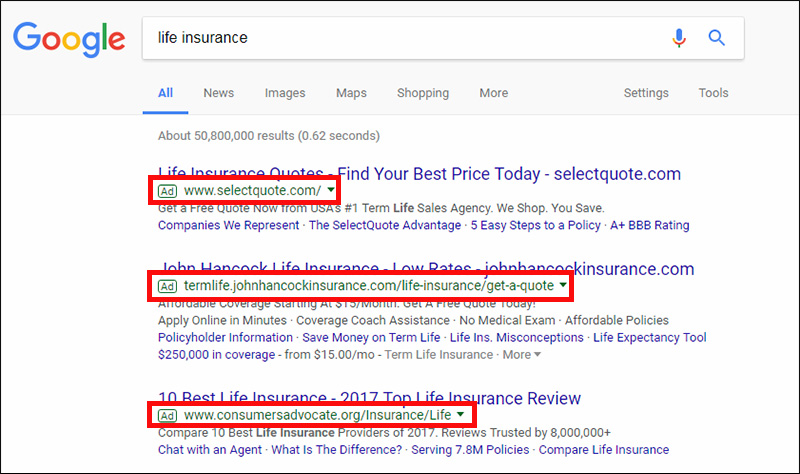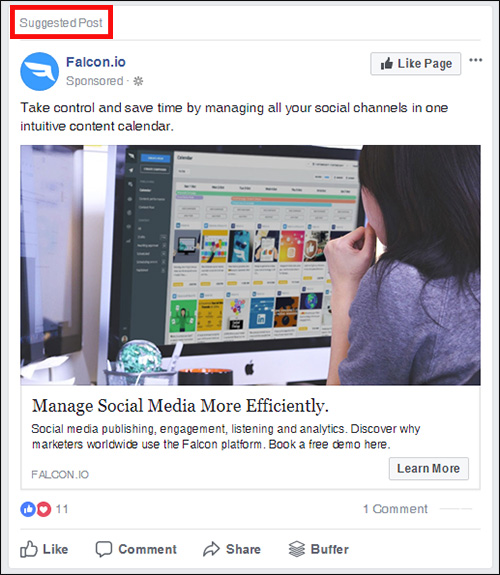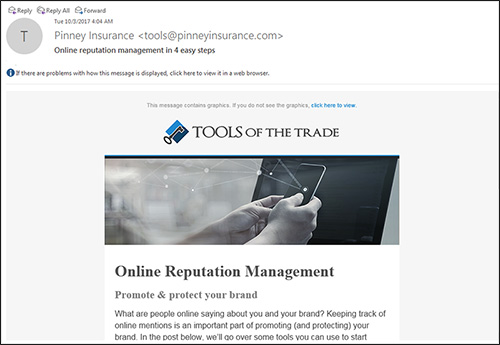
A few weeks ago, we talked about the surprising results of a DialogTech study: most consumers would rather buy insurance over the phone than online. That got us thinking. Are there other old-school sales techniques that we might be overlooking?
Direct mail was the gold standard in marketing for about a century, ever since catalog sales by mail turned Sears and Montgomery Ward into household names. Can it still work today?
Let’s Compare Response Rates
Today, most marketers put their money into digital advertising. Mary Meeker (formerly of Kleiner Perkins) notes that internet advertising has almost tripled from 2009 ($23 billion) to 2016 ($73 billion). This includes banner ads, pay-per-click ads, and social media ads. Digital advertising is definitely the "cool kid on the block" when it comes to marketing. But what are advertisers actually getting for their money? Let's find out.
Banner Ads
Consumers hardly notice banner ads anymore – between ad blockers and so-called “banner blindness,” getting a consumer to click your ad isn’t easy. HubSpot gathered stats from the Google Display Network that show ads in the finance and insurance category get a .33% click rate. That means that for every 1,000 people who see your ad, 3 people will click. For each click through the Google Display Network, advertisers in our industry pay an average of .72 cents per click (WordStream).

Pay-Per-Click Ads
Thanks to Google’s dominance in search, pay-per-click ads usually only refer to Google ads. These are the text ads that appear alongside or above Google search results. They’re fantastic for reaching a wide audience, but it costs quite a bit for every click you get. On average, PPC ads in the insurance industry get a 0.37% click rate. As of 2017, according to the WordStream article linked above, the average cost per click for search terms in insurance and finance is $3.72.

Social Media Ads
When Facebook began running ads, it was a cheap way to get views and clicks. Then, as more businesses began running ads, many markets got saturated – and ad prices went up accordingly. As of early 2017, the average click-through rate for Facebook ads in insurance and finance is .56% (SmartInsights). Returning to WordStream’s cost analysis, we see that the average cost-per-click for Facebook ads in finance and insurance is $3.77.

Most marketers will tell you email is the easiest and most affordable way to reach consumers – and they’re right. The average click-through rate for an insurance-related email is 2.11% (SmartInsights). However, the average person gets 88 emails per day (TextRequest). You’re competing in a crowded landscape!

So how does direct mail stack up?
According to Entrepreneur.com, the average direct mail response rate is 3.4%. That’s 10 times the response rate of a display network ad, and almost 7 times the response rate of a Facebook ad.
What Makes Direct Mail Compelling in 2017?
There are a couple reasons why print still stands out:
- Trust. A fly-by-night company probably won't go through the hassle of printing and mailing a postcard. According to Springboard Communications, 56% of customers trust print communication more than email or social media. Remember the post we linked to at the top of this article, showing that consumers prefer to buy insurance over the phone or in person? If you’ve reached out to local consumers with a direct mail campaign, you’re more likely to be the agent they turn to when it’s time to ask a question or meet face-to-face.
- Staying Power. It’s easy to delete an email. In fact, it’s downright irresistible when you’re struggling to reach Inbox Zero at the end of a busy day. But it’s super easy to keep a business card or postcard on hand. In fact, 48% of recipients keep direct mail marketing pieces for future reference (Southwest Direct). Your direct mail piece is a visual reminder that the consumer needs to take action.
- Deliverability. A whopping 81% of recipients read or scan their mail daily, according to the USPS. Let’s compare that to the average email open rates posted by SmartInsights. Hobbies, the highest-ranked category, boasts a 28.46% average open rate. Insurance, as mentioned above, is 21.56%.
- Less Competition. Consumers get 2-3 pieces of direct mail per day (USPS). Compare that to the 88+ emails in their inbox. With less competition for attention in the mail, you have a better chance of standing out.
- Age Targeting. Still looking for a way to attract millennials to your business? A whopping 92% of young shoppers say they prefer direct mail to help them make purchasing decisions (Southwest Direct). Maybe it’s the novelty of getting something in the mail. Maybe it’s easier to absorb information about a complicated topic like insurance when it’s presented on paper. Whatever the reason, sending flyers, brochures, or postcards looks like a great way to target younger consumers.
How Can You Use Direct Mail?
Take a few minutes to think about what you want to accomplish. Do you want more local business? Do you want people to visit your website or follow you on social media? Once you have a clear goal in mind, it’s much easier to determine what your call-to-action should be. Here are just a few campaign ideas.
Promote Your Brand & Business
- Introduce yourself. If you want to build up a local clientele, send a postcard or letter with your business card inside. Include a great photo of yourself, contact info, and directions to your office. The USPS has a service that will send your mailing to everyone in a particular area or neighborhood. You select the area, provide your direct mail piece, and they do the rest. TIP: Create a special page on your website for mail recipients and include that URL in the mailing (i.e., https://yourhomepage.com/postcard). Google Analytics can show you how many visitors that page gets, helping you track your direct mail ROI.
- Get more in-person business. Offer a free 30-minute consultation. In your mailing, let the recipient know what information you need to evaluate their current coverage. Also, try to highlight how you can help - did you save other clients hundreds per year on a new policy? Can you help them get a new policy that offers living benefits?
- Promote your content. Build readership by reaching out to consumers near you, or in target areas nationwide. Create a new webpage on your site and provide this URL in your direct mail piece. You could create an exclusive free guide for download, or provide other content you don’t broadcast to regular site visitors. Plus, include your social media links so they can follow you online.
Promote a Product or Solution
- Holiday promotion. When are people most likely to be thinking about family? When do they already expect to get good things in the mail? Sending a mailer at the right time – Christmas, New Year’s, Mother’s Day, Father’s Day – can increase your chances of earning new business.
- Convert term to perm. How many of your clients have term policies ending in the next 6-12 months? Round up their addresses, and send them an invitation to talk to you about continuing their coverage. Or, if you’re online only, send them to a page on your website that tells them why conversion is a good idea, and what steps to take next.
- Product or carrier changes. For most people, insurance is a set-it-and-forget-it purchase. They’re not checking up on carrier ratings or product developments. If something major happens in the industry, it’s up to us to tell them. Is their carrier getting out of the business? Did a carrier get upgraded or downgraded by the ratings bureaus? Is a product they purchased being discontinued? These are all good reasons to reach out to clients.
- Cross-sell. What other products might your clients be interested in? If they’ve already bought from you, you’re a trusted entity. Can you also help them get disability or critical illness coverage, for example?
What do you think about direct mail?
Have you used direct mail to reach out to clients? If so, what did you send and how did it work? Tell us in the comments!
